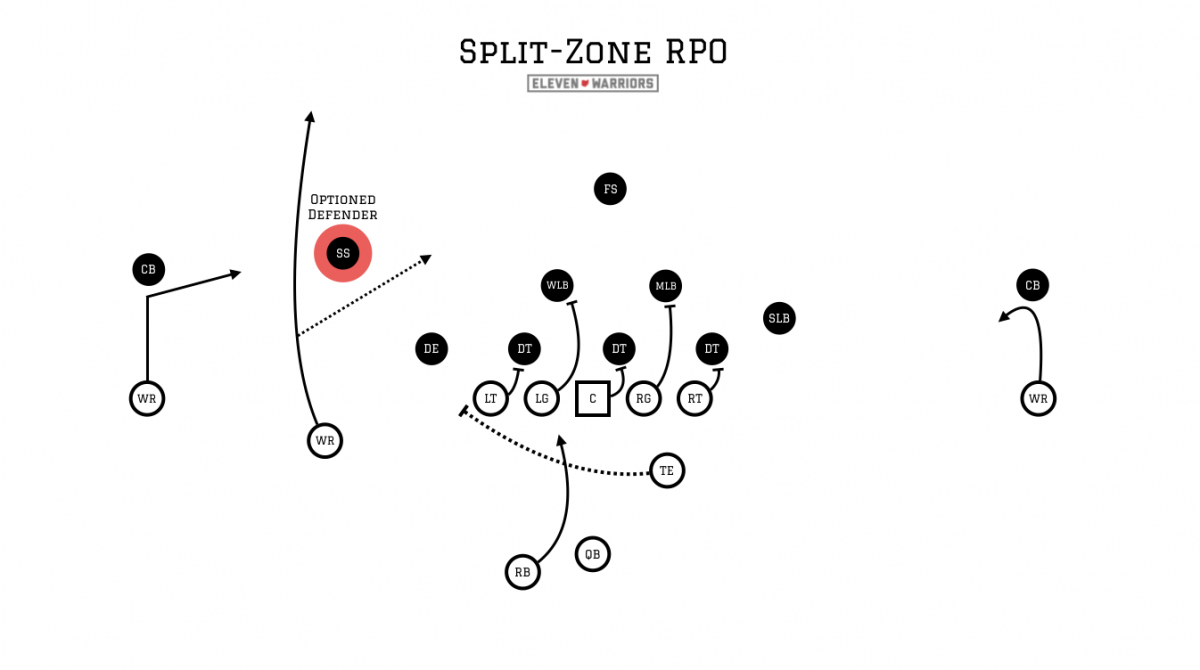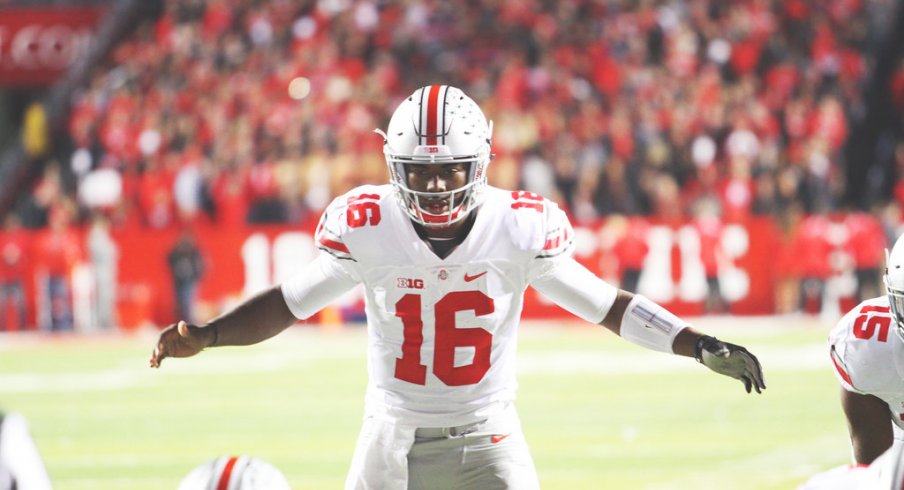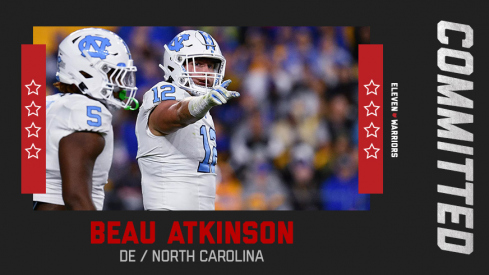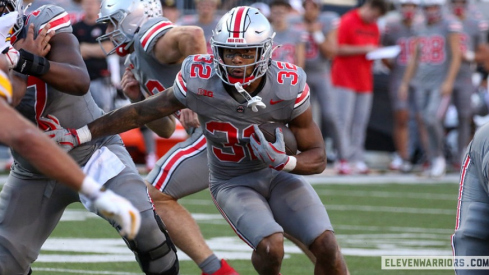Emeka Egbuka goes to the Buccaneers at No. 19, Donovan Jackson is chosen by the Vikings at No. 24 and Tyleik Williams is selected by the Lions at No. 28 overall in the 2025 NFL Draft.
As mentioned last week, there are numerous advantages for adding a change of tempo to the way an offense operates, and many of the most successful programs at the collegiate level have taken notice. The downside of running an uptempo, no-huddle system however is a noticeably decreased playbook.
Though defenses are often forced to simplify their own schemes, the offense is also forced to reduce the number of plays they can call when running without a huddle, as the time needed to organize and make adjustments at the line has been removed from the equation. With a decreased game plan, the key to success in this scenario is the ability to consistently execute the handful of plays called, but that doesn't mean the coaching staff simply picks some of their favorite plays at random.
Most offenses that have gone no-huddle have been at the forefront of the option 'revolution' that has taken place in the past decade or so. This has often been out of necessity, as most coaches believe it's the best way to avoid telegraphing where the ball is going, deciding instead to attack a specific defender. The benefit of running option plays is that (at least in theory), the defense can always be wrong, and it's up to the offense (usually by way of the quarterback) to get the ball in the hands of a player left undefended.
"Tempo plays must have options," Ole Miss head coach Hugh Freeze said at a coaching clinic last year. "If you run inside zone, you need to tie it to a hitch pattern or a quarterback bootleg."
The most basic form of the option as it's seen today is the zone-read, which many casual fans can easily identify. In this situation, the quarterback reads an unblocked defender, usually a defensive end, and determines whether to hand the ball off to his running back behind the blocking of his offensive line, or keep it for himself to run.
Since it first surfaced in the offenses of Rich Rodriguez, Urban Meyer, and many others in the early 2000s, defenses have come up with countless ways to stop the zone-read. But it becomes much harder to do so when they're tired and struggling to communicate in the precious few seconds between snaps when a no-huddle offense is moving as fast as possible.
As we can see in this example, the Ohio State offense simply run the same, simple inside-zone read three straight times, as even though the defensive coaches likely have a solve for how to defend both the quarterback and running back at once, they can't communicate their solution in time.
But uptempo offenses are becoming much more sophisticated every single year, as the option philosophy extends further and further into passing games. Not only do quarterbacks still have the option of handing off, in packaged run-pass options (known as RPOs) they also have a simple passing concept allowing them to throw the ball outside.
As has been documented here before, the Buckeyes of are no stranger to executing such concepts. Though it's not always apparent, the OSU offense has been its most effective over the past few years when pairing their quicker tempo with an RPO.

But RPOs have evolved beyond simply including a wide receiver screen or simply hitch with an inside run. These days, coaches at every level are combining virtually every known pass concept play with a running play, making the lives of defensive coordinators everywhere miserable.
There is no single combination of plays that works best though, as any pairing could work well if properly executed. However, the evolution of RPOs has expanded to attack the full width of the field, going back to the original reason for using spread formations in the first place. Freeze's offenses at Ole Miss have been at the forefront of this evolution at the collegiate level, combining as many as four different options for his quarterback into one play.
With many such packaged-plays including a running option for the quarterback, many would assume that these ideas haven't transferred to the NFL. However, pro offenses like the Packers have adopted much of this thinking with great success, simply removing the running threat while giving veteran QBs like Aaron Rodgers the ability to act as de facto play-callers on the field.
The key to such concepts working within an uptempo setting though is the need to include quick passes that get the ball out of the quarterback's hands in a hurry. One of the biggest weaknesses of going so quickly is the inability to recognize and diagnose blitzes from the defense, leaving downfield passes out of the equation.
As Freeze added in the same clinic mentioned earlier, "The best protection in tempo offense is the tempo. Do not design tempo pass plays that have three step drops and three hitch steps by the quarterback before he throws. If you do that, all of the twists and stunts the defensive line can run will be effective. The tempo does not give them time to run the twists."
In this instance it's clear to note that running an 'uptempo' offense is a philosophy not only related to the speed at which the ball is snapped. If an offense simply hurries up to snap the ball so the quarterback can hold the ball for five seconds in the pocket, the defense has had time to recover and gain their bearings. Instead, spread offenses must distribute the ball all over the field quickly, forcing the defense to be in a perpetual state of 'chasing' the ball.
Additionally, uptempo systems are not designed to fall 'behind the chains,' meaning they aren't built to face long third-downs. They are meant to pick up five yards at a time, leaving the offense in manageable situations with the possibility of a play-maker breaking a tired defender's weak tackle and picking up huge yards after the handoff or catch.
With this in mind, it's no wonder that J.T. Barrett's skill set fits this philosophy much better than Cardale Jones' did, as Barrett's talents as a runner and quick decision-maker are exactly what is needed from a quarterback running these RPOs. It was obvious to all that the OSU offense was much more effective when Barrett took the field this year, but the Buckeyes tended to run their uptempo packages most often in the red zone, the area in which Jones would of course be substituted for Barrett.
This is certainly not to say that Barrett is clearly a better player. If he was, he would've been named the starter from day-one last fall. However, as the Buckeyes began to adopt more uptempo elements as the season went along, Barrett's abilities were amplified by this specific philosophy.
But the Buckeyes seemed to run fewer RPOs in the early part of this year than they had the year prior when Tom Herman was calling plays. This was likely due to Meyer's philosophy of going out of his way to get his best players the ball, which conflicts directly with the idea of option football. However, following the loss to Michigan State in November, RPOs and tempo played a major part in the OSU game plan in Ann Arbor just one week later.
Had the Buckeyes fully adopted an uptempo approach from day one this fall, they could've leaned heavily on a small package of plays that remain part of the 'tempo package' all year long, and highlighted the talents of the many play-makers on the 2015 offense. Many coaches usually keep five basic plays in this package all year long, with three to five additional being added each week that take advantage of an opponent's specific weakness spotted on film.
As the video showed above, the Buckeyes had a simple zone-read, likely a piece of the tempo package all year, but then added in this RPO which combined a slant from Mike Thomas on the left with a deep vertical route from the slot receiver. This combination, along with a 'split-zone' inside run, attacks the single-high safety look the Wolverines ran much of the year while still giving Barrett the chance to hand off inside.


As the Buckeyes look forward to 2016, Barrett's third year as a starter, it's likely that they'll lean harder on option concepts and an uptempo philosophy, as the burden of responsibility falls most on the quarterback and could make the lives of a young offensive line much easier. However, to do so, they'll have to communicate the play-call to these young players, which is what we'll talk about next week as we wrap up our look at no-huddle offenses.


